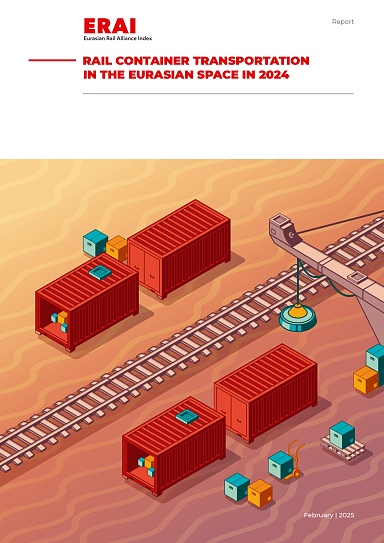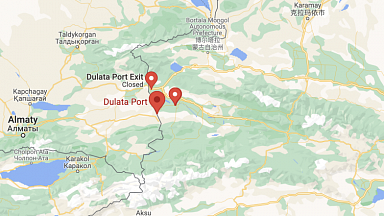Early 2024 marked a sharp, more than two-fold, increase in maritime transport rates due to instability in the Red Sea and the Suez Canal. From December 2023 to January 2024, the shipping rates grew by 109.6%. In December 2023, Yemen’s Houthis said they would attack all ships in the Red Sea. The route through the Red Sea leads to the Suez Canal, which is the shortest waterway between Europe and China. As a result, in order to avoid risks, transport companies were forced into changing routes in favour of safer, but less lucrative and economical routes. The alternative route went around Africa’s Cape of Good Hope. This route increases the transit time by 14−15 days compared to 28 days it takes to cross the Red Sea, which makes the former less attractive for shippers, including due to higher transport costs.
While ocean freight rates remained volatile during the year, rail freight rates were stable. A comparison of ERAI’s January ($3,085 per FEU) and December ($3,215 per FEU) 2024 rates shows a 4.2% increase. Moderate price increases with zero volatility provide shippers with comfortable long-term planning, which is a competitive advantage of the Eurasian rail route.
Increase in freight traffic and return of transit cargoes
In 2024, a total of 745,900 TEUs travelled along the Eurasian rail route, up 10.6% from 674,000 TEUs in 2023. At the same time, the volume of China-EU-China transit transport increased by 80.3%, from 211,100 to 380,600 TEUs. Thanks to stable rates and good operation of the route, container transport volumes reached a record-high.
Notably, the increase in rail transport volumes became possible precisely due to China-EU transit traffic. The recent trend of increased freight handled by EAEU-China transport route was replaced by a reduction in the amount of 21.1% to 365,300 TEUs.
Cargo base and maintaining the trend for maximising utilisation
In recent years, the number of empty containers on the Eurasian China-Europe-China route tended to decrease. In 2024, the share of empty containers amounted to 4%, which is the best result (on a par with 2022) over the past eight years. Compared to the 2018, the difference is 24 p.p.
According to the ERAI website, in 2024, 86 types of goods from a corresponding number of categories at the level of two Customs Commodity Code (FEACN) digits were transported along the China-Europe-China Eurasian rail route. In 2023, this number stood at 88 categories, and in 2022 − 92 categories. With regard to four-digit FEACN level goods, 837 categories of goods were transported in 2024, 807 in 2023, and 899 in 2022. Certain contraction in the diversity of transported categories is indicative of a cargo base consolidation around traditional shippers and destinations.
The value of freight carried along the Eurasian China-Europe-China rail route amounted to $29.4 billion in 2024. This represents an 84.9% increase from last year’s $15.9 billion. The share of total amount of goods from annual trade between Europe and China in 2024 reached 3.7%; the figure for 2023 was 2.1%.




